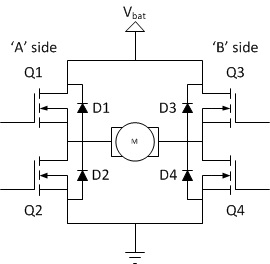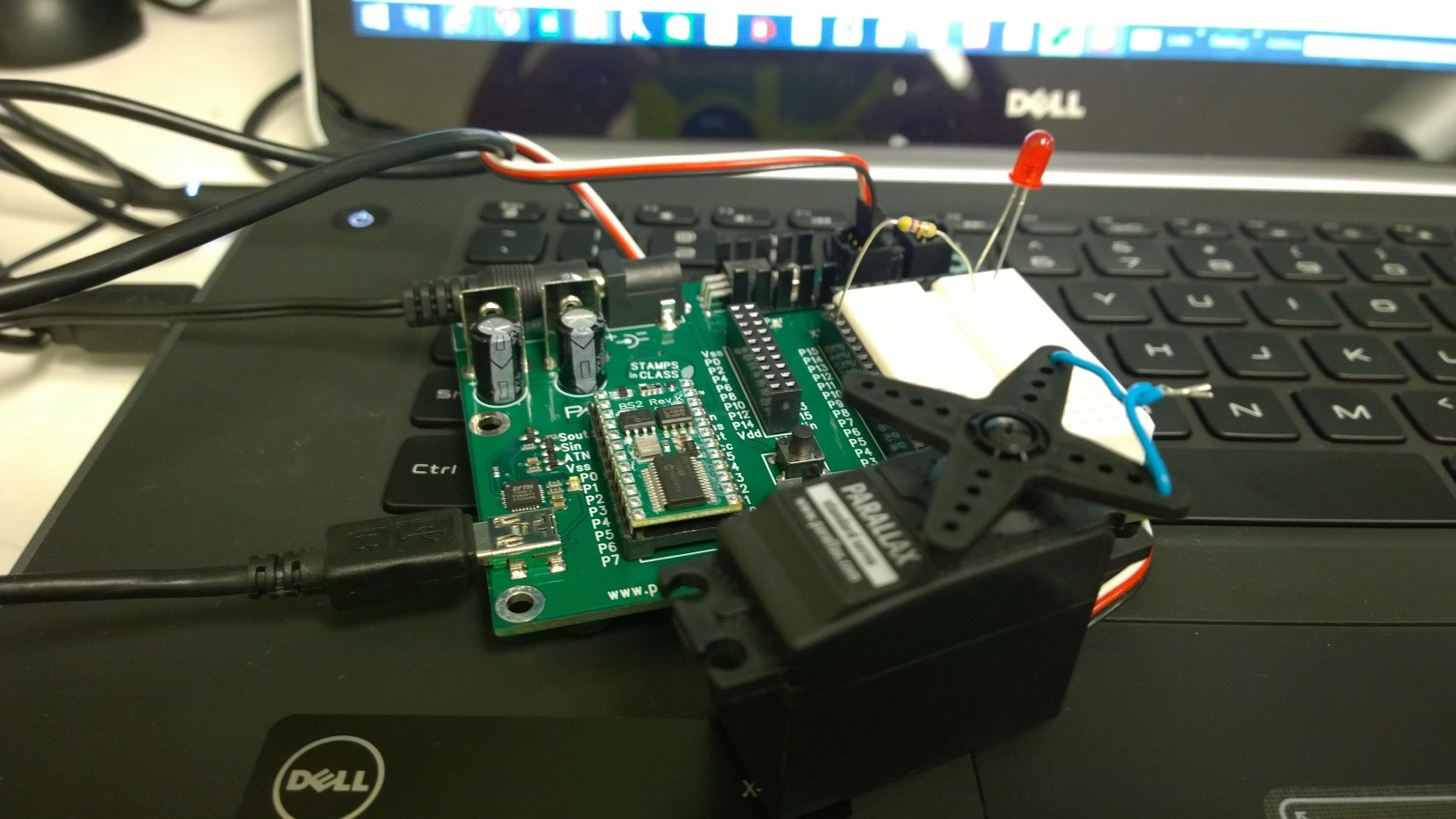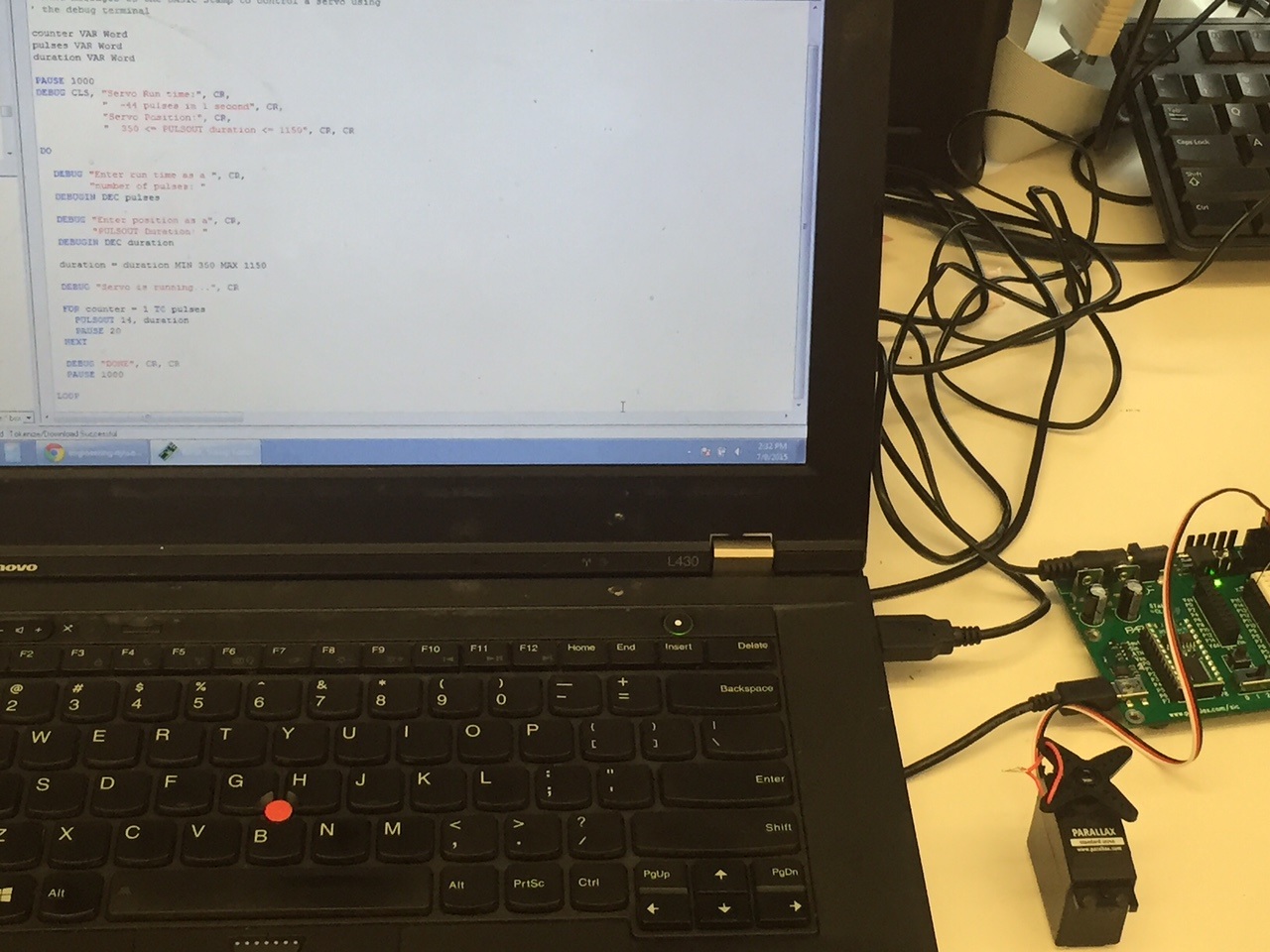July 9, 2015, Day 4:
Marc Frank and Hau-yu Chu
Today we learned about DC motors and light sensors. We learned how DC motors work and how to use pulse width modulation to control the rotation of the motor and use H-bridge to control the direction of the rotation. DC motor turns by a torque created by the magnetic field generated when electric current flow through a coil of copper wire. The pulse width modulation works by supplying a sequence of high-low pulses, where the duration of pulses is controlled. The H-bridge consists of 4 switches. The rotation direction is controlled by closing or opening the switch pairs Q1/Q3 and Q2/Q4.
The servo motor is a DC motor with built-in position feedback control. The motor can hold at the same position as long as coded signal exists on the input line or power is still connected to the servo motor. For lab activities, we learned to control the Parallax standard servo motor with Pbasic pulsout command. In the afternoon lecture we learned about light sensors such as photo-resistor, phototransistor, and photodiode. Photo-resistor varies resistance corresponding to the light intensity. More light result in less resistance. Phototransistor converts light energy into electrical energy. Photodiode converts light into current. We did not work on the lab activities for light sensors yet and are still in the process of understanding these electronic devices.
From:http://www.modularcircuits.com/blog /articles/h-bridge-secrets/h-bridges-the- basics


